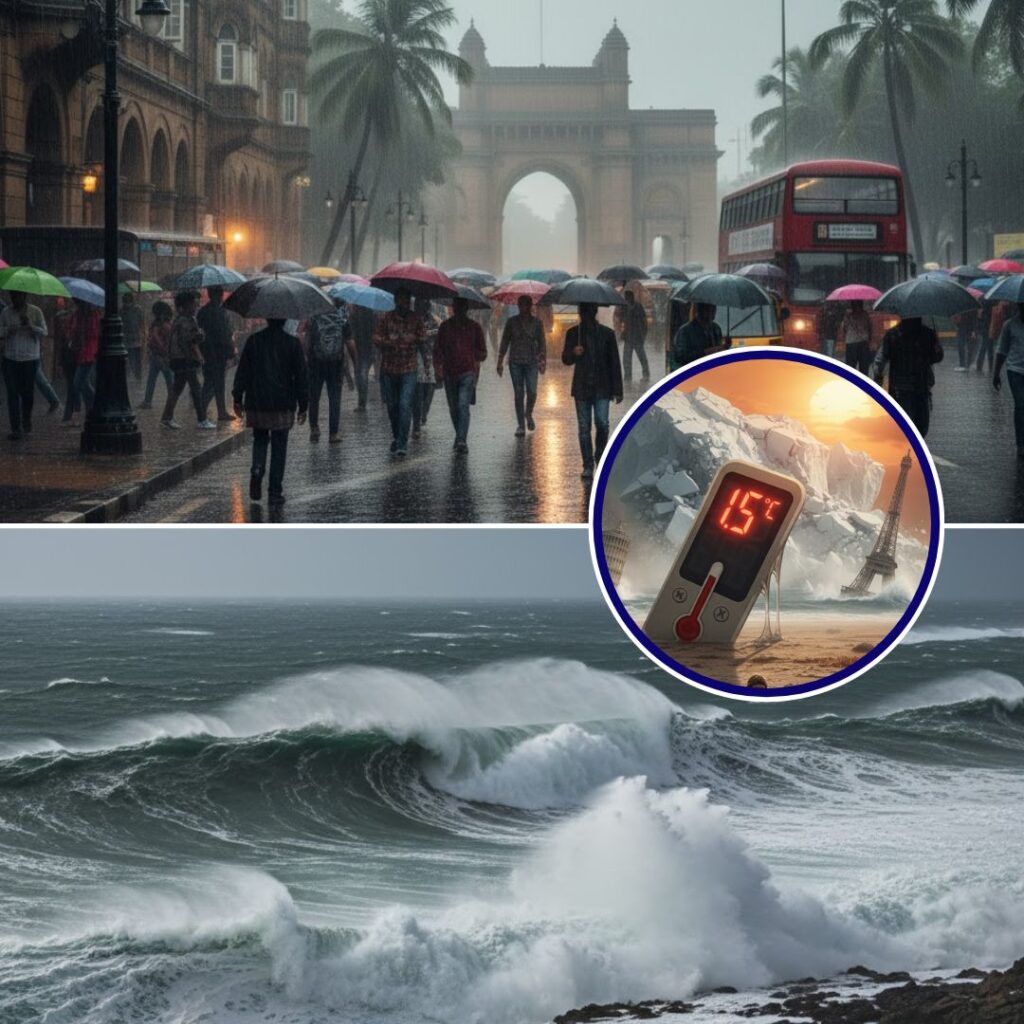Source & Image: Catch News | Author: Shriya Mohan
The Journey
- The Bhim Yatra began in Delhi on International Human Rights Day, 10 December 2015
- It will return to the capital and end on 13 April, a day before Ambedkar’s 125th birth anniversary
The Message
- The yatra seeks to give manual scavengers a ray of hope, and information about their rights
- It also wants to reiterate Ambedkar’s message ‘jhaadu chhodo, kalam pakdo’ (leave the broom, clasp the pen)
More In The Story
- An insight into the plight of manual scavengers from Safai Karamchari Andolan head Dr Bezwada Wilson
- Why the yatra is so important in the time of Swachh Bharat
All the children of Mother Bhim.
I weave the garland of unity.
Built the nest again.
Oh become a friend of Waman.
On the stem of the heart
engrave the name of Bhim,
live happily here in unity.
– Waman Kardak
It is Day 78 of the Bhim Yatra. The orange-coloured bus has reached Mirzapur in Uttar Pradesh, 650 km away from Delhi, where it will come to an end.
People are huddled together singing songs, listening to talks. After hearing someone recite Kardak’s poem, there is empathy and a comradeship among the listeners. After all, they are all manual scavengers who have thought this to be their world – lifting night soil with their hands, diving into sewer pits to clear blockages, getting down into septic tanks to clean liquid shit with their bare hands.
Sometimes, one of them loses consciousness because of the toxic gases and falls into the hell-hole for good. By the time he is rescued it is too late.
And yet, life goes on, unchanged, for generations, no matter which political party they vote for.
‘Stop Killing Us’
The Bhim Yatra is an ongoing countrywide mobile protest. Manual scavengers on board an orange-coloured bus are criss-crossing the country for 125 days, passing through 500 districts in 30 states.
The Yatra began from Delhi on International Human Rights Day, 10 December 2015, and will end in the capital on 13 April 2016.
The message to citizens and the government is simple: ‘stop killing us’.
On 14 April, India will celebrate the 125th birth anniversary of Dr BR Ambedkar. “We didn’t want to celebrate it with the usual garlanding of his idol. We thought the best way to celebrate Babasaheb would be to bring his vision to the people and make people aware of their rights,” says Dr Bezwada Wilson of the Safai Karamchari Andolan.
And the yatra, an initiative of the andolan, is doing exactly that. “Ambedkar said ‘jhaadu chhodo, kalam pakdo’ – leave the broom and clasp the pen. That’s what we’re telling our community to do,” says Wilson, who himself belongs to Karnataka’s Thotti caste – a community whose job was to clean night soil.
Facts Of The Matter
The latest Socio-Economic Caste Census data released in July last year reveals that 1.8 lakh households are engaged in manual scavenging across India. Maharashtra, with 63,713, tops the list, followed by Madhya Pradesh, Uttar Pradesh, Tripura and Karnataka.
Wilson estimates, through the andolan’s network, that over 1,200 worker deaths on the sewer line go unrecorded and unnoticed each year. Three lakh women still clean dry latrines across India and face terrible health consequences, usually leading to respiratory and skin infections due to the direct contact with toxic fecal matter.
But Wilson says the government is an accomplice to this blatant human rights abuse.
In Madhya Pradesh, the government municipalities employ manual scavengers to clean community dry latrines in the state.
The Indian Railways is known to be its largest unofficial employer. The ministry denies employing manual scavengers officially, but the railways does not employ any automated technology to keep its 80,000 toilets and 115,000 kilometres of tracks clean.
“On the one hand, Prime Minister after Prime Minister has stood at the Red Fort and spoken about manual scavenging as a national shame. And yet, they don’t even have the honesty to reform themselves,” says Wilson.
Uncompensated Deaths
Mahatma Gandhi raised the issue of the horrible working and social conditions of ‘bhangis’ 115 years ago, at the 1901 Congress session. Yet, it took about 90 years for the country to enact a uniform law abolishing manual scavenging.
It was only in 2013 that the Manual Scavenging Prohibition Act was passed.
According to it:
- No human being can enter a manhole.
- Even if they do, it should be only in cases of dire emergency.
- Even in such an emergency situation, it specifies how one should enter and with what safety gear in place.
But Wilson says: “No municipality follows any aspect of the law. Men go down the hole everyday and there cannot be a daily emergency. Even when they do enter the hole, there is no safety gear in place,” says Wilson.
According to him, the only time the uniform and gear come out on display is on the day of an official inspection, of which they are informed well in advance.
When deaths do occur, FIRs of the crime are rarely ever filed. Only after much pressure and agitation from the community is an FIR filed. Even then, deaths are recorded as “due to negligence” and rarely under the Manual Scavenging Prohibition Act; rarer still under the SC/ST Prevention of Atrocities Act, which has punitive measures.
The Manual Scavenging Prohibition Act only punishes the employer or toilet owner with one year of imprisonment and a fine of Rs 1 lakh. A sewer worker’s life comes cheap. And his family is hardly ever compensated.
Because of the non-transparent system of filing an FIR, workers’ deaths are hardly recorded as work-related. Statistics show that less than 3%of manual scavenger deaths have received compensation. Families wait for years and fight a useless battle.
Wilson explains that the Bhim Yatra is precisely about giving such information out, so that workers and their families are informed about how to claim legal protection in case of work-related injuries and deaths.
Simultaneously, Wilson is clear that they are not asking for any change in the legal framework of the existing laws.
“We are saying the law is in place, just implement it!” he says.
Why Swachh Bharat Won’t Help
Since the focus shifted to the Swachh Bharat Abhiyaan and the building of toilets, have things really improved?
Wilson says no. “Things are even worse than before. Earlier, people used to say they didn’t know much about manual scavengers. Now they’re sure that everything is fine because of Swachh Bharat,” he says.
The campaign seems to have made people believe that if the PM himself lifts the broom for a day, then everybody must be cleaning. But to Wilson, Swachh Bharat is still being hauled on the backs of the very same scavengers who have been discriminated against for centuries. The more the toilets, the larger the septic tank that needs to be cleaned by the scavengers.
“When our Valmiki kids go to school and they are told that Swachh Bharat means everybody must clean. But everybody doesn’t! For us, that is an imposition,” Wilson says.
“The makers of Swachh Bharat are unable to understand that they are killing the childhood and ability to dream within Dalits. In this society, when you give a slogan, you have to be careful.”
This is the exact difference between Gandhi and Ambedkar. Gandhi glorified manual scavengers by calling himself a ‘bhangi’. He told them that if they were to abandon their work in protest, it would inconvenience society. He told them to carry on the task assigned to them – to keep society clean.
Ambedkar, on the other hand, fired their imagination, telling them to never touch a dead carcass and to leave their brooms and travel far and wide in search of other occupations. Ambedkar talked about automation and using modern technology.
In India today, we talk about spending thousands of crores on a single bullet train, and haven’t yet found a way to automatise our sewer cleaning.
Perhaps, if all manual scavengers abandoned their work and society was greatly ‘inconvenienced’, then their cause could factor into governance solutions.
That precisely is what the Bhim Yatra wants to spark – an awareness that makes the community brave enough to demand its right to human dignity.












